As the growing your own food movement gains momentum, many people are considering keeping bees in their backyard. People who are entertaining this idea have questions about starting this endeavor. One of the main questions asked is about the safety aspect of keeping bees. Can you keep bees safely in your backyard?
It is safe keeping bees in your backyard, provided you understand and follow safe beekeeping practices to minimize risks. Understanding bee behavior, locating the hive correctly, restricting access to the apiary site, and working on your bees responsibly are essential safety aspects of beekeeping.

Beekeeping is essentially undertaking the keeping of what could potentially be dangerous wild animals. As with dealing with other wild animals, knowledge of safe practices is key to safe beekeeping. As a beekeeper, you must consider your own safety, and that of your family, your neighbor’s safety, and the safety of pets and other livestock in the area.
How To Keep Bees Safely in Your Backyard
Beekeeping is a satisfying and rewarding hobby that anyone can do with some knowledge and the right equipment. You do not need expert knowledge from the outset before you start beekeeping since your knowledge base will grow with experience.
The vital knowledge you need for beekeeping is the safety aspects of the hobby and keeping bees in your backyard with your safety and the safety of your neighbors in mind.
This pre-requisite knowledge encompasses basic bee behavior and locating your beehive and essential personal protection gear for working your bees. Remember that keeping your bees happy and comfortable is part of the responsibility and will help minimize safety risks.
Bees can be found in most urban and suburban gardens and seldom present any problems to the neighborhood residents. Keeping bees on your property is a totally different ball game because you will be housing tens of thousands of bees in your garden rather than a few foraging bees.
The legalities of keeping bees in your backyard
Before you commit to keeping bees and spend money on beekeeping gear and beehives, you must consult your local authorities to determine if you are permitted to keep bees in your neighborhood.
In densely populated areas and certain municipalities, the keeping of bees is not sanctioned as a legal activity due to public safety and other concerns.
Checking the legalities of beekeeping is the first step to backyard beekeeping. If beekeeping is permitted in your area, the local municipality may have by-laws regarding locating your beehives. Some of these by-laws may lay down requirements for beekeeping, such as restricting access to the area where your bees are kept, distances from property boundaries, and directing the bees’ flight path in and out of the hive.
Check for bee allergies
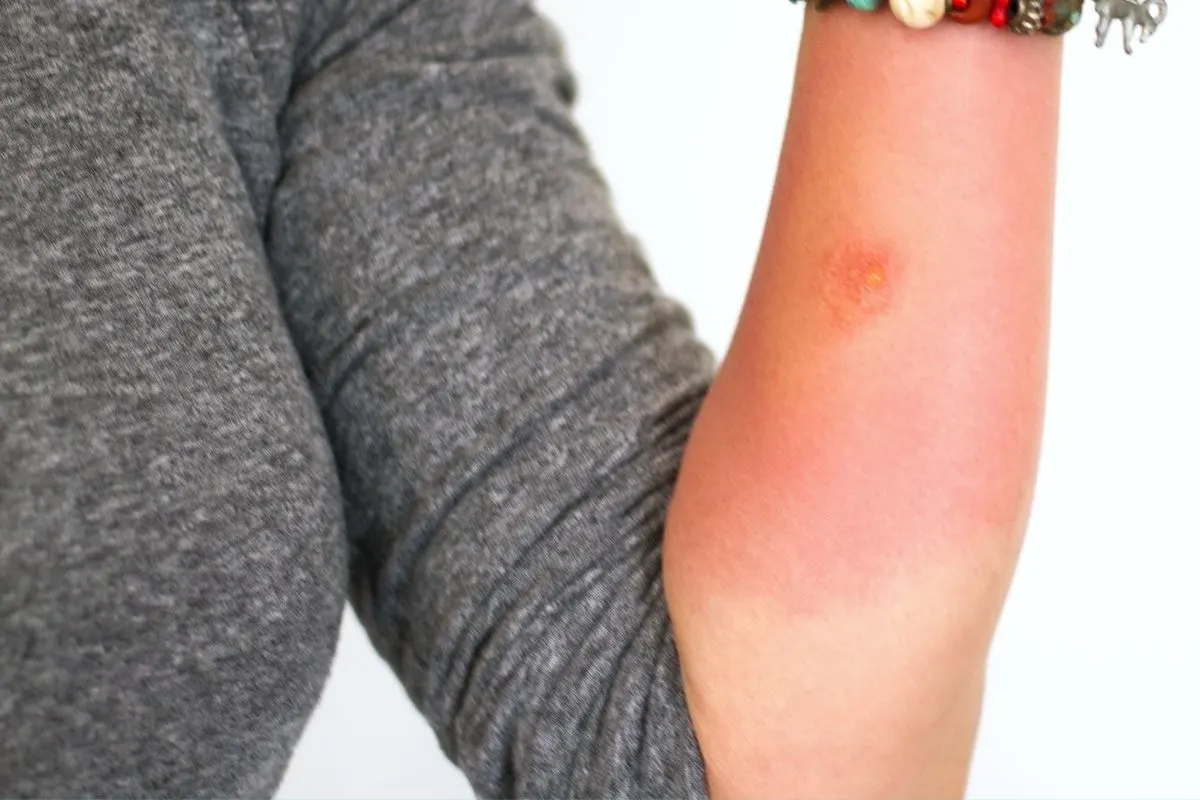
If you are unsure of your bee-allergy status or anyone in your household, it may be worth getting you and your family checked for bee-sting allergies.
A beehive can house anywhere from 20 000 to 80 000 bees. These bees will be taking up residence on your property and significantly increase the risk of your family members receiving a sting.
It will also be worthwhile checking with your neighbors if they have beesting allergies, as this may influence your decision about hive location in your backyard.
Do you have sufficient forage for the bees?
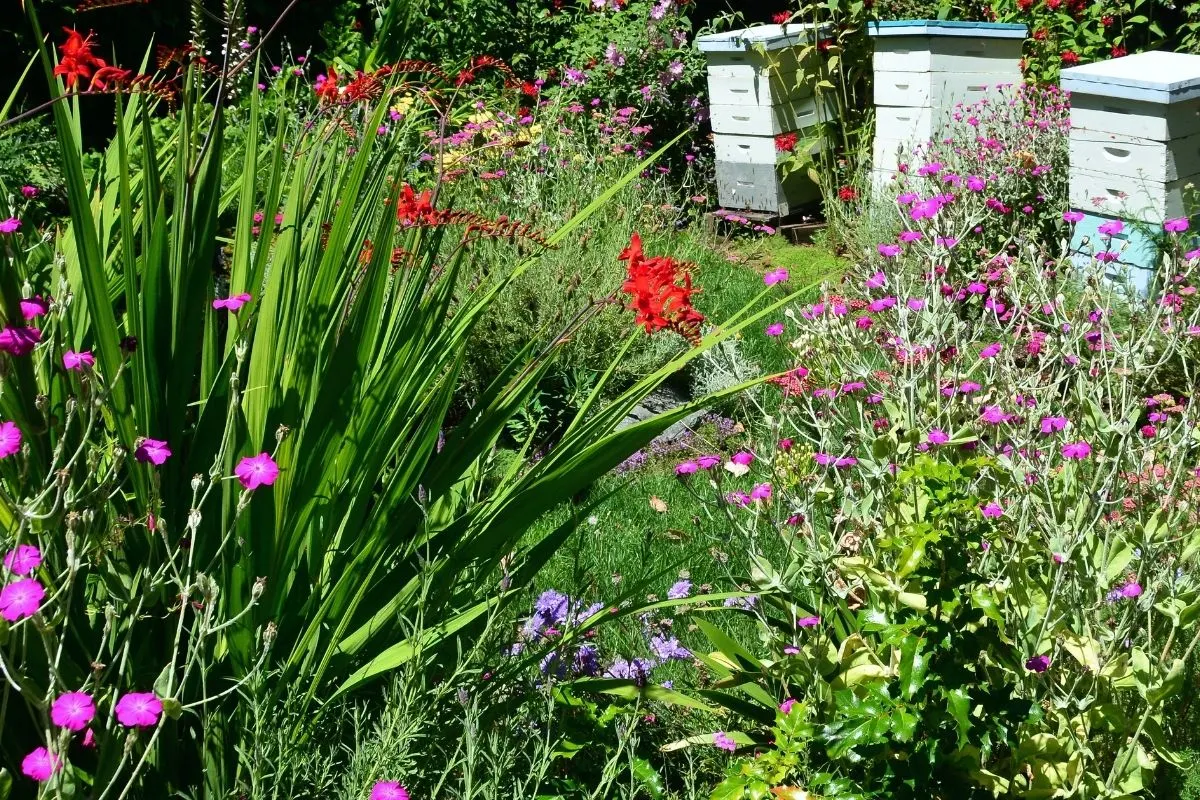
For your beekeeping to be successful and productive, you need to ensure that your local area has enough forage to sustain the bee colony.
Depending on the vegetation in your area, there will be food available during certain seasons and a lack of food in other seasons. Your bees will need a constant water supply and forage for the colony to grow and be productive in their honey generation.
If there is enough forage in summer but no winter food, your colony may not survive the winter periods of lack.
If the bees have to travel long distances to find food, the growth of the colony and the production of honey may be slow, and it could be a few years before you can harvest any honey.
If this is your situation, you can provide a solution in your own backyard by planting bee-friendly plants with some flowering in spring and summer and others in autumn and winter. This will provide your bees with food from your own property and ensure the success of the colony.
Use the right equipment when keeping bees
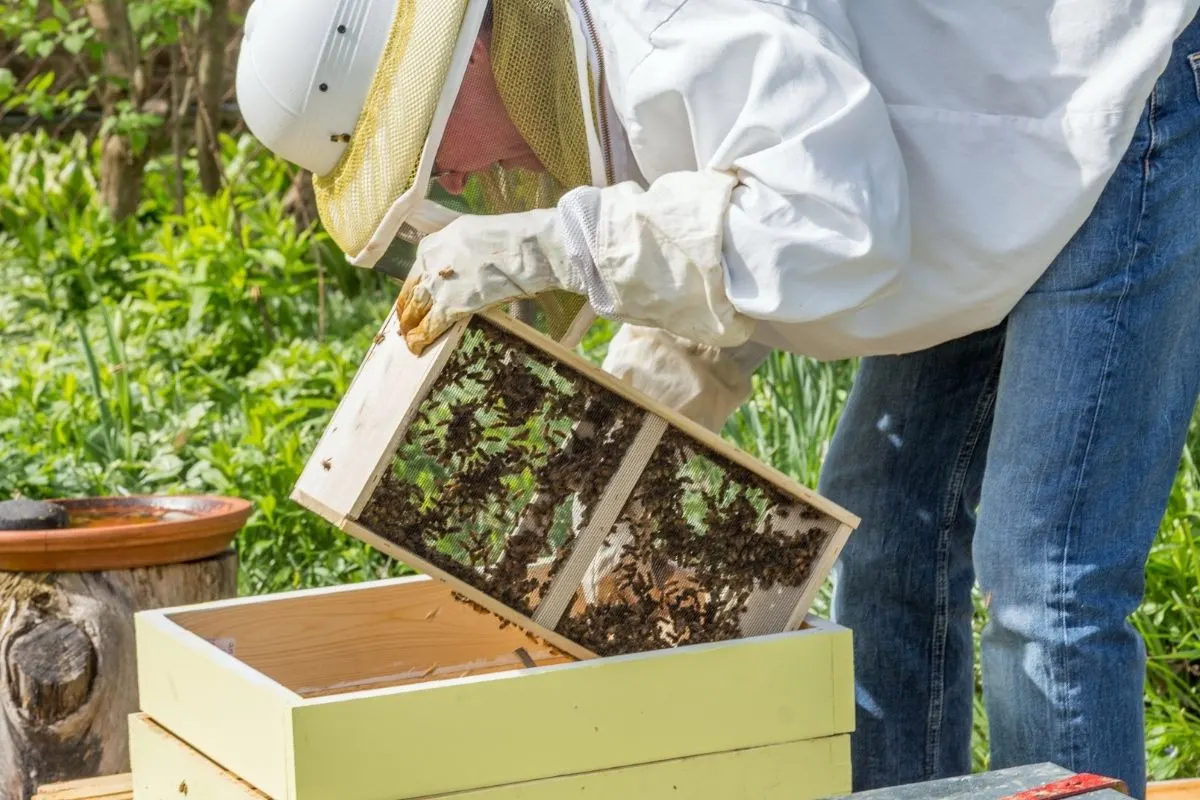
Always use the right equipment when beekeeping. This statement is true for your personal protection equipment, tools for working the bees and the beehives themselves.
Beekeeping without the correct equipment is an accident waiting to happen and compromises your safety and the safety of everyone in your neighborhood.
The following equipment is the minimum required to safely work on your bees.
- A full bee suit. A full bee suit is a white overall, or jumpsuit, with elasticated cuffs and zippers sealed with Velcro. It also includes a veil and head protection. Gloves and bee-proof boots are also included as beekeeper PPE. Attending bees without the correct PPE is foolhardy and can end in disaster. Don’t underestimate your bees and always work with the right protective gear, particularly as a beginner.
- A bee smoker. Never try to work your bees without a lit smoker on hand. Circumstances may arise while working on your beehives which require giving the bees smoke to keep them calm. If your smoker is not lit, you will be unprepared and unable to get it lit in time to prevent problems from getting out of hand.
- A hive tool. A hive tool allows you to work quickly and efficiently when the hive is open because it is designed for the tasks you need to perform in the hive.
- A first aid kit. A first aid kit that contains items necessary for treating beestings is important to have on hand should you happen to get stung.
Beehive location in your backyard
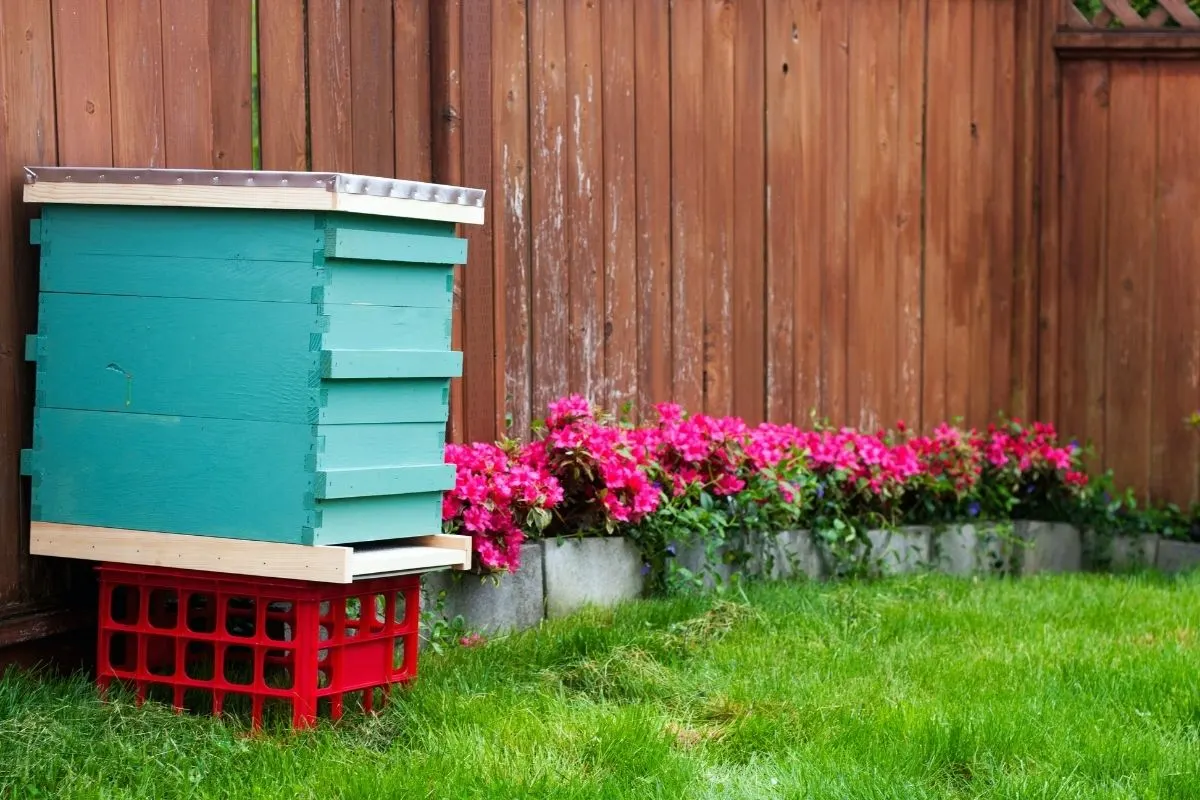
Safe backyard beekeeping is strongly influenced by the location of the beehive. The right location for the hive will prevent the bees from becoming problematic for your neighbors and your own household. The right site will provide the bees with a safe undisturbed area to go about their business.
The local by-laws may lay down some requirements for your hive location, to which you need to adhere to keep your beekeeping operation above board and within the law. This may include distances from your property boundary and access restriction, among other requirements.
Here are some considerations you need to be aware of when seeking a good location for your beehive.
- Shade for your bees. Hot bees are not happy bees. The ideal location for a beehive is where the hive gets morning sun, shade during the hot midday hours, and some sunshine from the setting sun.
- Place the hive away from high traffic areas. Place the beehive in an area of the backyard that does not see a lot of foot traffic. Place the beehive away from paths through your garden.
- Position the hive away from bright lights. Lights at night are attractive to bees, especially those working some overtime foraging for their colony and arriving home a little late. These bees can be distracted and drawn to bright lights in your yard and your neighbors’ yards and find their way into your homes.
- Keep the hive away from areas that need frequent mowing. Bees are protective of their hives and their colony, and the sound of motors and vibrations can rile them up. Mowing the lawn around the beehive, even with electric motor lawnmowers, is a sure way to get the person doing the mowing attacked by your bees.
- Situate the bees away from entertainment areas. Do not position the hive close to your entertainment area, where people’s movement and smoke from barbeques can disrupt the bees. Also, take into account where your neighbors’ entertainment areas are located relative to your beehive placement.
- Restrict access to your beehives. If you have small children who could wander in the hive’s vicinity or prevent visitors from stumbling into the bees’ territory, you may need to cordon off your apiary area. Depending on your local by-laws, you may need to signpost your enclosed area, warning people of the presence of the bees.
Bee flight path to and from the hive
Bees are very protective, especially at the front of the hive. The bees will have a flight path from the hive entrance for bees leaving to forage and bees returning from foraging. If the bees’ flight path to and from the hive intersects a garden path, a driveway, or any other place in the garden where people walk, the bees can collide with people while they are taking off or landing.
There are two ways this problem can be addressed. Firstly do not locate the bees in this position or erect a barrier that forces the bees’ flight path to go up and over the people passing by.
The barrier must be at least 6.5-feet tall to force the bees to have a steeper approach to the hive entrance above the head height of most people. Something that works well for this is a fence along which you can plant a vine or creeper to act as the barrier. If the plant also produces food for the bees, then you have the best of both worlds!
Is it safe to keep bees with pets?
Bees are not only a potential safety risk to people but also to pets and livestock. Dogs are curious animals and will sniff around a hive, particularly a newly placed hive. Place the hive on a stand high enough to prevent dogs from coming anywhere near the entrance to the beehive.
It is safe to keep bees with pets in your backyard, provided you take precautions to keep your pets and other animals away from the beehive. The bees will see any animal approaching the front of the hive as a potential threat that they have to deal with.
A beehive located too close to areas of your garden your dogs frequent can cause issues for both the bees and dogs. The bees may feel threatened and try to protect the hive from the dogs, or the dogs may bump the hive or hive stand, causing the bees to become agitated.
Keep the beehive away from chicken coops, rabbit hutches, and horse stables. If you have large livestock on your property, you may need to fence off your apiary site to keep the large animals out.
A beehive on a stand looks like a good scratching post for horses and cattle. If they try to scratch themselves on the hive or the stand, they could knock the beehive over or enrage the bees, causing them to attack.
If you keep bees in your backyard and have pets and other animals on your property, your animals will inevitably sustain a beesting now and again. Educate yourself on the best ways to deal with beestings for these animals so you can treat any stings as soon as possible.
When you work your backyard bees
A key factor for safe beekeeping is the timing when you work with the bees. Whenever your bee work requires opening the beehive, you need to ensure that you disturb the bees as little as possible and consider the safety of all those around you when you work.
The way to disturb your bees as little as possible is forward planning every time you open the hive. Mentally go through the steps of what you are going to do when the hive is open. Layout all the tools and equipment in easy reach and have your smoker lit before opening the beehive.
This way, you are organized, and when you open the hive, you will work quickly and efficiently and minimize the disturbance you cause the bees. This will reduce their agitation and prevent them from becoming overly aggressive.
Bees do not like the heat, and they become easily agitated if they are disturbed on hot days or in the heat of the day. Do not open your bees if the neighbors are having a party next door or there is a lot of activity in your own yard.
The best time to work your bees is at sundown when the bees are starting to settle for the night. Use smoke from the smoker liberally to keep the bees calm and work quickly to minimize disturbance. As the sun sets, the bees will calm down quickly, and there will be less danger to animals and people alike.
So, Is It Safe to Keep Bees In your Backyard?
Keeping bees in your backyard is possible if legally allowed and can become a hobby that can develop into an income-generating enterprise!
However, bees can be dangerous, which means you should educate yourself as much as possible on the behavior of these incredible creatures and the safest ways to work with them.
You will also learn to read the mood of your colony with time and experience, which will add to your safety levels. As a beginner, you should always stick to the advised safety protocols when placing your bees in your backyard and working the hives!
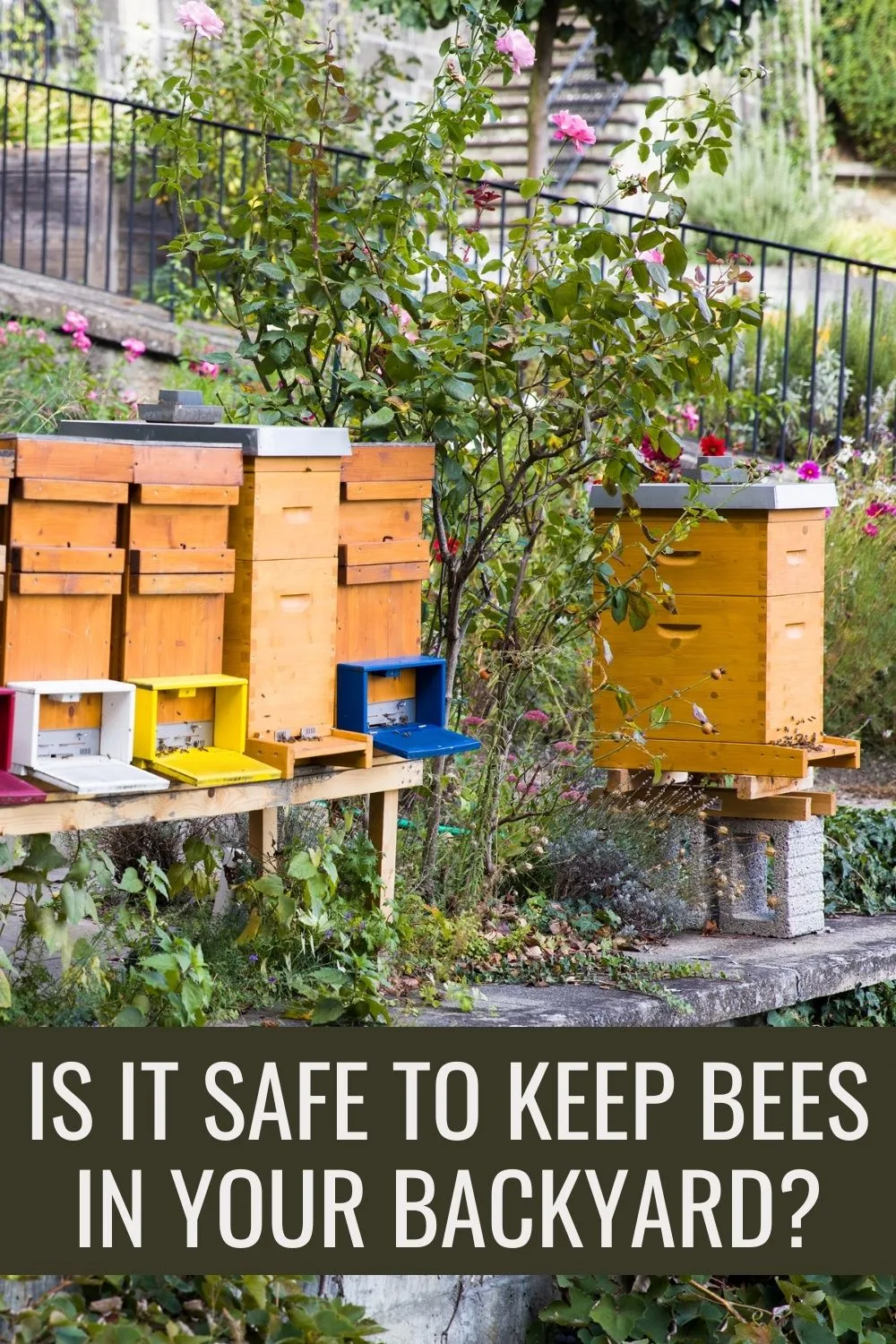
References
https://homeguides.sfgate.com/dangers-back-yard-bee-hive-56367.html
https://www.perfectbee.com/learn-about-bees/about-beekeeping/beekeeping-and-the-neighbors
https://pollinator.cals.cornell.edu/master-beekeeper-program/meet-our-master-beekeepers/suburban-bees-how-keep-bees-residential-areas/
https://www.almanac.com/beekeeping-101-why-raise-honeybees
https://www.keepingbackyardbees.com/how-to-keep-your-backyard-safe-for-bees-zbwz1911zsau/
